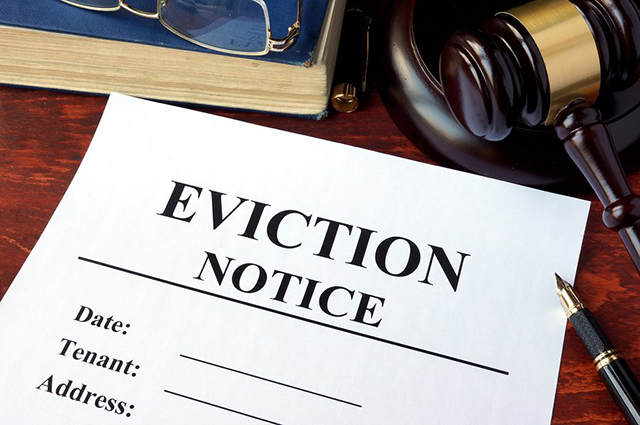Land Use, Real Estate & Easements

LANDLORD-TENANT
Eviction
Recovery of Security Deposits
Collection of Damages

EASEMENTS AND ACCESS/PROPERTY
Tower Leases
Partition of Land
Roadways
Fence Disputes
Survey Defects
Prescriptive Easements
Adverse Possession
Contractor Liens
Defense of Liens
Condemnation/Pipeline Easements
Enforcement of Covenants
Homeowners Association Issues

ZONING AND SUBDIVISION
Subdivision Approvals
Zoning Exceptions
Zone Changes
Conditional Use Permits
Defense of Zoning Violations
LAND USE, REAL ESTATE & EASEMENTS ACCOMPLISHMENTS
Represented the owners of a farm whose neighbor had crossed their property for years without a proper easement. Our clients wanted to install a center-pivot irrigation system which crossed the road used by the neighbor. The neighbor sought an injunction to prevent closure of the road. We successfully defended and prevented an injunction from being entered. We sought and obtained summary judgment in favor of our clients so they could use their land as they wished. The neighbor appealed the case to the Wyoming Supreme Court and the high court unanimously affirmed the victory we achieved at the District Court. The neighbor had to acquire another means of accessing his property and our clients were able to install the irrigation system and maximize the use of their land.
We represented a couple on appeal in an access road case. Their attorney referred the case to us for our expertise in this area of the law. The couple had acquired property that had no legal access. When they attempted to obtain access to their property, the County Commissioners dismissed the case because our clients could not obtain a legal easement across some Federal land on the route of access to their property. Ultimately, this case of first impression was heard at the Wyoming Supreme Court. We briefed and argued the case on appeal. The Supreme Court agreed with our arguments and sent the case back to the County Commissioners for establishment of a road to provide our clients the access they sought.
We were hired by a title insurer to obtain access for our client, who had purchased commercial property and later learned that he had no legal access when his neighbor blocked his access road. We filed the petition to establish access and helped the court navigate a newly adopted statute on access roads. We obtained the access road as our client had requested. The other side, unhappy with the result, filed an appeal. We defended the appeal and the Wyoming Supreme Court agreed with our arguments. Outcome: our client enjoys his access and the value of his property was preserved. The case ended well within the insurer’s expected budget.
Disclaimer: These descriptions represent brief summaries of actual cases handled by our firm. However, each case is unique and the success described in these cases may not mean that your case or another similar case will result in a similar outcome.

EASEMENTS & REAL ESTATE – FAQ's
Real estate law is an area of civil law that concerns the rights to possess, use, and enjoy an area of land.
An easement is the grant of a non-possessory property interest that entitles the holder to some form of use or enjoyment of another’s land. This gives the easement holder the right to cross onto or use the land of another for a specified reason. Easements are typically created for things like utilities or road access. An easement is considered to be either appurtenant to the land or in gross.
– An easement appurtenant when it benefits its holder in his/her physical use or enjoyment of the property. To have an appurtenant easement, there must be two parcels of land involved; a dominant tenement, which gets the benefit; and a servient tenement, which bears the burden.
– An easement in gross means the rights of the easement are for a specific person instead of the benefit of adjoining lands. This means it confers upon its holder only some personal or pecuniary advantage that is not related to his/her use or enjoyment of the land. With an easement in gross, the servient land is burdened, but there is no benefitted or dominant tenement.
– Easements can also be affirmative or negative. An affirmative easement gives the easement holder the right to do something on another’s land. A negative easement restricts the holder of some land from doing something on the land.
An affirmative easement can be created:
– 1) By Grant (if created for a duration of more than one (1) year, the grant must be in a writing that complies with the formal elements of a deed);
– 2) By Implication (which means it is implied from existing use);
– 3) By Necessity (usually in a landlocked setting; an easement of right of way will be implied by necessity if the grantor conveys a portion of his land with no way out except over part of his remaining land); or
– 4) By prescription (an easement created by satisfying the elements of adverse possession).
Adverse possession, sometimes called a prescriptive easement, is a doctrine under which a person in possession of land owned by another may acquire title to it, so long as certain requirements are met.
– The requirements of adverse possession are:
– 1) The use of the land must be Continuous (e.g. use must be uninterrupted for the statutory period of ten (10) years.
– 2) The use must be Open and Notorious (meaning it is the sort of possession that the usual owner would make under the circumstances, and it is obvious to onlookers);
– 3) The use must be Actual (meaning there must be a physical occupation of the land); and
– 4) The use must be Hostile (meaning the possessor doesn’t have the true owner’s permission to be on the land; if permission is granted, adverse possession is defeated).
– An appurtenant easement passes automatically with the dominant tenement, regardless of whether it is even mentioned in the conveyance. The burden of the easement appurtenant also passes automatically with the servient estate, unless the new owner of the servient estate is a bona fide purchaser and the new owner does not have notice of the easement.
– An easement in gross is not transferrable unless it is for commercial purposes.
An easement can be terminated through:
– 1) Estoppel (where the servient land owner materially changes his/her position in reasonable reliance on the easement holder’s assurances that the easement will not be enforced);
– 2) Necessity (easements created by necessity expire as soon as the need for the easement ends. However, if the easement of necessity was created by an express grant, the easement will not expire just because the need for the easement ends);
– 3) Destruction of the servient land (e.g. the land was destroyed by something other than the willful conduct of the servient owner);
– 4) Condemnation of the servient land (e.g. if the servient land is condemned through eminent domain, the easement will be terminated);
– 5) Release (e.g. the easement holder gives the servient land owner a written release to end the easement);
– 6) Abandonment (e.g. the easement holder demonstrates an intent to never use the easement again, through some physical action; such as building a structure that prevents use of the easement);
– 7) Merger (also known as unity of ownership, where the easement is extinguished when title to the easement and title to the servient land become vested in the same person); or
– 8) Prescription (the servient owner interferes with ownership of the easement by satisfying the elements of adverse possession).
A land contract must be in writing, be signed by the party to be bound, must sufficiently describe the land, and must state some form of consideration.
– There are two implied promises in a land contract:
– 1) The seller of the land promises to provide marketable title at the time of closing; and
– 2) The seller promises not to make any false statements of material fact regarding the land.
A mechanic’s lien is a security interest against your property, available to contractors, laborers, or material suppliers, that is used to secure payment for work and materials used in building or repairing a structure on your property.
LANDLORD & TENANT LAW – FAQ's
The lease agreement controls matters involving the landlord and tenant. The lease agreement is a contract between the landlord and the tenant, which designates certain rights and responsibilities with regard to the use and enjoyment of real property. The lease will specify the duration of the rental agreement, the cost of rent, location, who may live on the premises, etc. Of particular importance, the lease may specify how disputes between the landlord and tenant are handled. It is important to seek advice from a qualified attorney prior to entering into a lease agreement, for help drafting a lease agreement, or if any disputes in the lease arise.
A landlord may evict a tenant when:
– 1) the tenant is more than three (3) days late paying rent;
– 2) the property is being sold by order of the court or through foreclosure;
– 3) when the property is sold under power-of-sale and the purchaser has demanded possession;
– 4) when the property is sold by executors, guardians, administrators, or on partition;
– 5) where you have not vacated the property at the agreed upon time;
– 6) where you have violated any renter’s terms imposed in Wyoming’s Residential Property Act, which include:
– (i) Maintain the residential rental unit occupied in a clean and safe condition and not unreasonably burden any common area;
– (ii) Dispose of all garbage and other waste in a clean and safe manner;
– (iii) Maintain all plumbing fixtures in a condition as sanitary as the fixtures permit;
– (iv) Use all electrical, plumbing, sanitary, heating and other facilities and appliances in a reasonable manner;
– (v) Occupy the residential rental unit in the manner for which it was designed and shall not increase the number of occupants above that specified in the rental agreement without written permission of the owner;
– (vi) Be current on all payments required by the rental agreement;
– (vii) Comply with all lawful requirements of the rental agreement between the owner and the renter; and
– (viii) Remove all property and garbage either owned or placed within the residential rental unit by the renter or his guests prior to termination of the rental agreement and clean the rental unit to the condition at the beginning of the rental agreement; or
– 7) by engaging in an act prohibited by renters, including:
– (i) Intentionally or negligently destroy, deface, damage, impair or remove any part of the residential rental unit or knowingly permit any person to do so;
– (ii) Interfere with another person’s peaceful enjoyment of the residential property; or
– (iii) Unreasonably deny access to, refuse entry to or withhold consent to enter the residential rental unit to the owner, agent or manager for the purpose of making repairs to or inspecting the unit, and showing the unit for rent or sale.
– A tenant cannot be evicted based on race, religion, sex, or national origin.
– If a landlord wishes to evict a tenant, the landlord must notify the tenant to leave the premises. The notice must be served on the tenant at least three (3) days before commencing the action, by leaving a written copy with the defendant (tenant) or at his usual place of abode or business if he cannot be found. If the tenant has not left the premises by the time the three days are up, the landlord must then file a Forcible Entry and Detainer Action, asking the court to evict the tenant.
– If there is an eviction action filed, the tenant must be given notice of the date of the hearing. If the tenant appears at the hearing, he/she will be able to ask the court not to evict him/her and must give reasons why there should be no eviction. However, if the tenant does not appear at the hearing, the court will evict him/her.
– If the court decides in favor of the landlord and evicts the tenant, the landlord should then request a writ of restitution, which allows the sheriff to evict the tenant from the property.
– Your lease agreement should specify the amount required to be paid as a security deposit when you first enter into the agreement. Upon termination of the lease agreement, property or money held as a deposit may be applied by the owner or his agent to the payment of accrued rent, damages to the residential rental unit beyond reasonable wear and tear, the cost to clean the unit to the condition at the beginning of the rental agreement and to other costs provided by any contract.
– The balance of any deposit and prepaid rent and a written itemization of any deductions from the deposit together with reasons therefor, will be delivered or mailed without interest to the renter within thirty (30) days after termination of the rental agreement or within fifteen (15) days after receipt of the renter’s new mailing address, whichever is later.
– If there is damage to the residential rental unit, this period shall be extended by thirty (30) days. The renter will, within thirty (30) days of termination of the rental agreement, notify the owner or designated agent of the location where payment and notice may be made or mailed.


